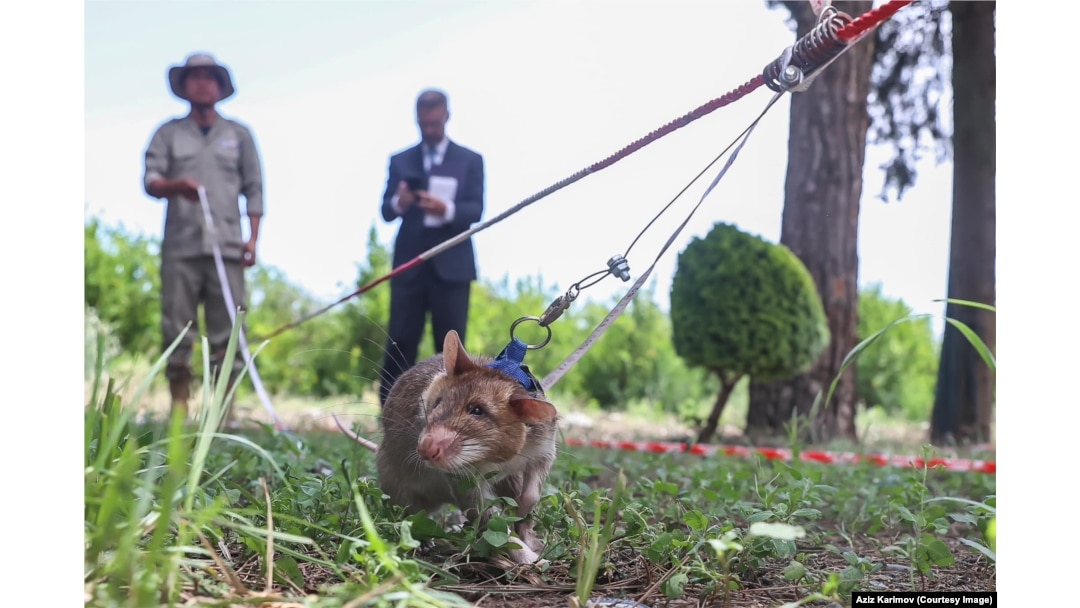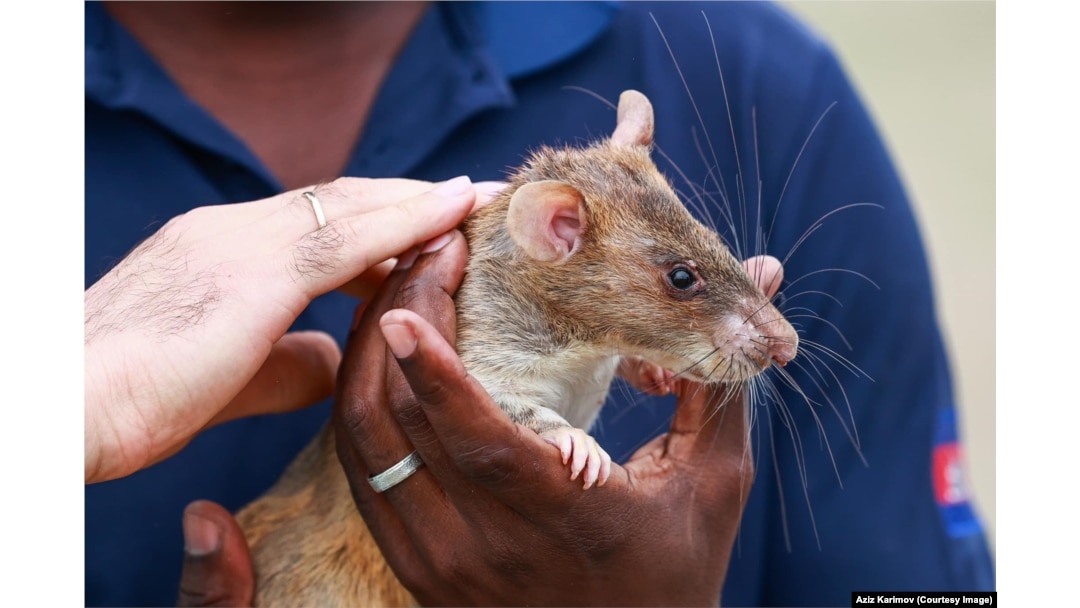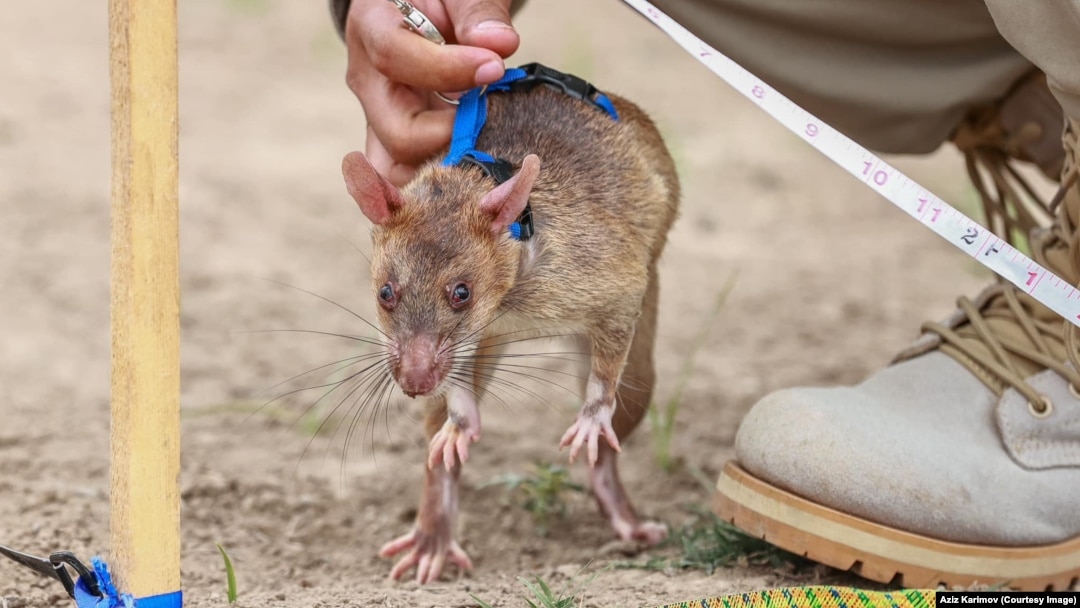An army of rats is set to sniff its way across land in Azerbaijan working, literally, for peanuts as they hunt for land mines.
Photos published by Azerbaijani photojournalist Aziz Karimov in late June show African giant-pouched rats and their handlers giving public demonstrations as they prepare to head into the danger zones in and around Nagorno-Karabakh.

A handler demonstrating how the African giant-pouched rats sniff for land mines in Azerbaijan.
A recent report from International Crisis Group estimates that as many as 1 million mines lurk below areas of Azerbaijan recaptured from ethnic Armenian forces during the 2020 war launched by Baku.
The minefields have stalled what Baku had touted would be a “great return” of Azerbaijanis displaced by earlier fighting with ethnic Armenian forces. Several civilians have already been killed by mines in the territory.

An African giant-pouched rat during a demonstration in Azerbaijan in June.
Lily Shallom is the communications manager of APOPO, the Belgian NGO that trained and deployed the mine-detecting rats. She told RFE/RL that 12 rats set off for the long trip from their base in Tanzania to Azerbaijan in May.
"The rats are still acclimatizing and in training" in Azerbaijan, Shallom said, adding that they are due to start working in the minefields in July. All of the deployed rats have names, including Ada Lovelace, Amani, and Gandhi. Their seven handlers hail from Cambodia, Tanzania, and Angola.
A demonstration of mine clearance by a rat and its handlers in Azerbaijan.
The African giant-pouched rats used by APOPO live for around eight years -- four times longer than smaller brown rats. The lifespan of the African rodents means, even after nine months of training, they can have careers lasting up to five years.
Weighing less than 1.5 kilograms, the rats are light-footed enough to walk directly over land mines without triggering their pressure fuses. Small antipersonnel mines such as the Soviet-designed PFM-1 “butterfly” explode under downward pressure of around 5 kilograms or more.
Another advantage of rats is their use of smell to detect TNT explosive. Humans using metal detectors frequently lose time digging up tin cans or other harmless metallic objects and can miss “minimum metal mines.”
A rat lowered onto Azerbaijani soil to begin a "sweep."
Working rats are able to search an area of 200 square meters in 20 minutes -- many times faster than a human mine-detection team. The rats indicate the location of a mine by scratching at the ground where they catch a whiff of explosive. Detecting a mine wins the rats a treat of mashed bananas and peanuts.
Aging rats in the APOPO team are given a well-earned retirement when their motivation begins to fade. The end of a rat's working life comes when, in the words of one trainer, “they spend more time grooming and sleeping” than sniffing for mines.
A harnessed rat in Azerbaijan in June.
The rats have some downsides. The working hours of the nocturnal animals are limited to the early hours of the morning before they are left to snooze through the day. The rats are infamous as an invasive species that was blamed for the first outbreak of monkeypox in the United States.
Mark Shukuru, a member of the APOPO team currently in Azerbaijan, says locals were "very curious and intrigued about the rats," but says many in Azerbaijan "find it hard to believe they are able to find land mines with 100 percent accuracy."


